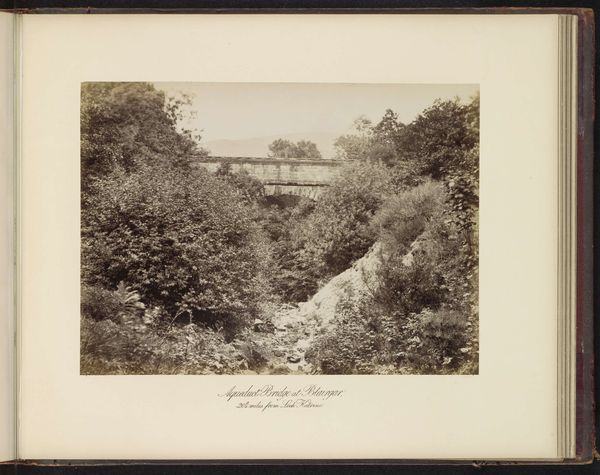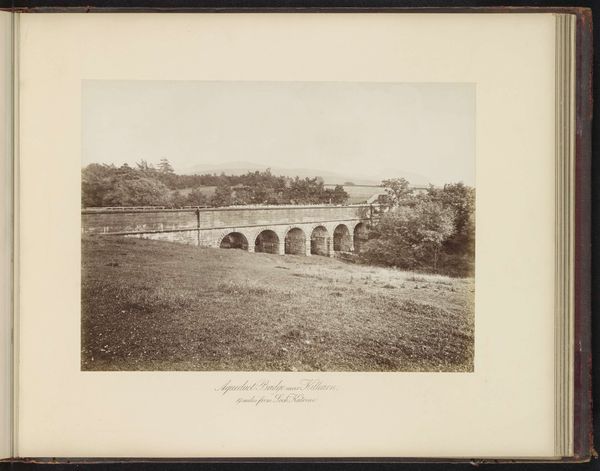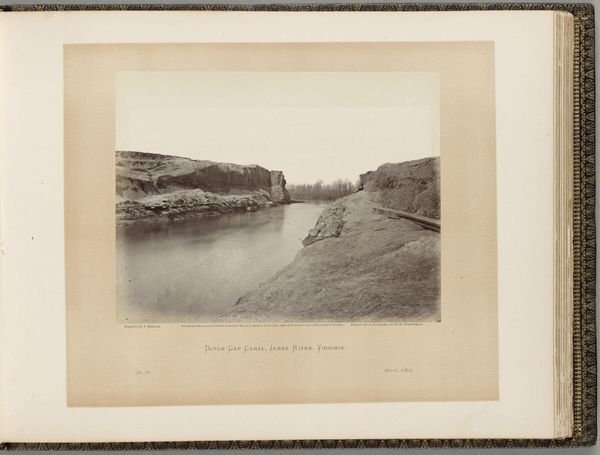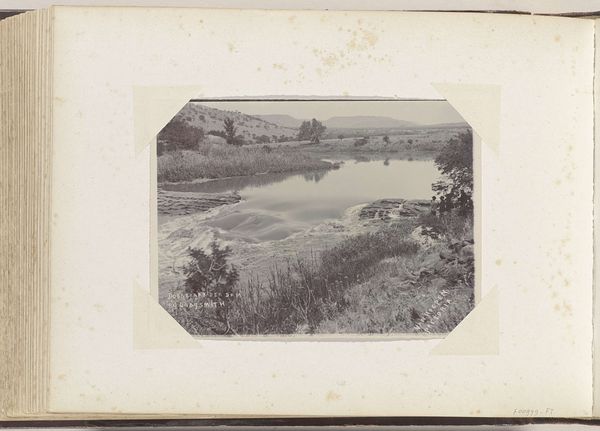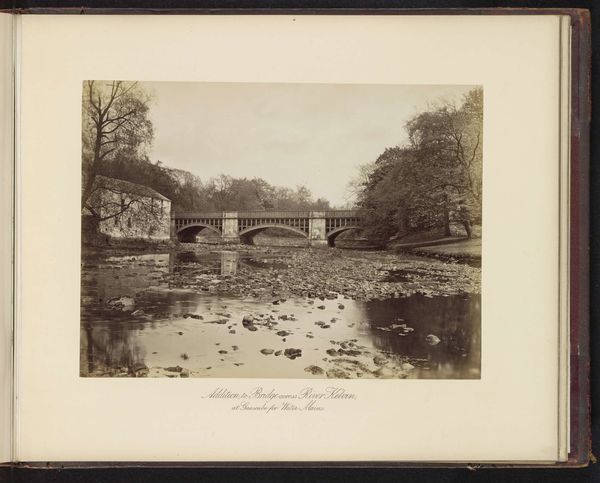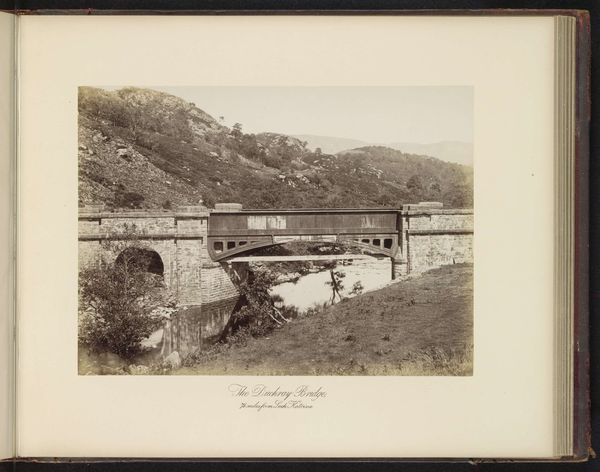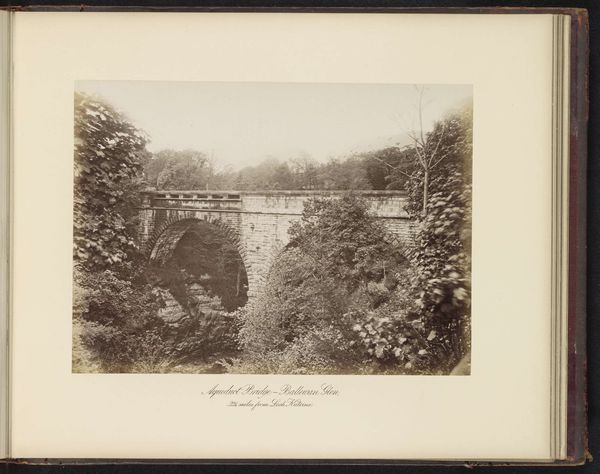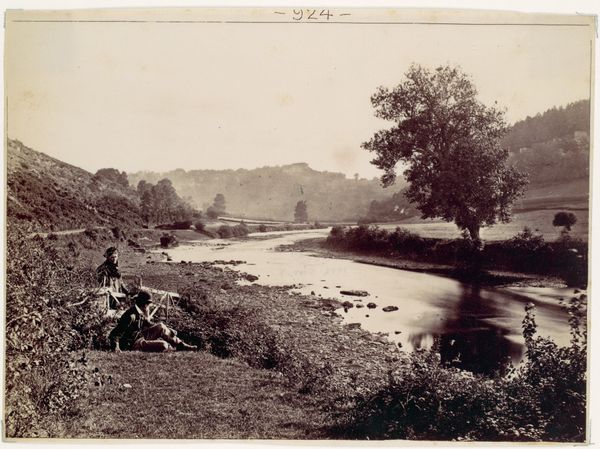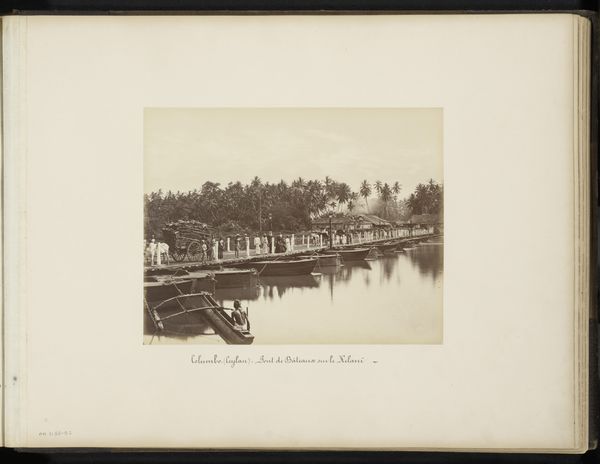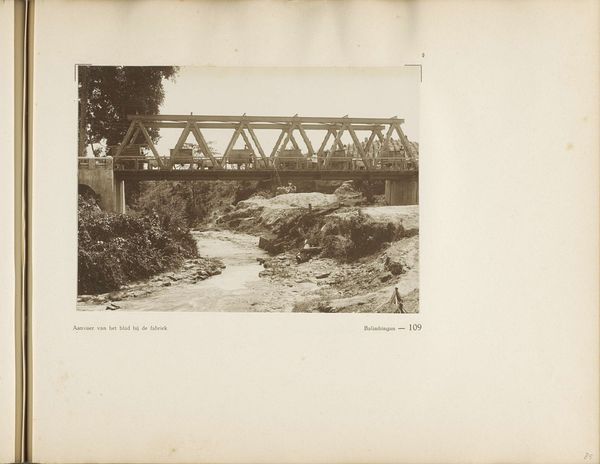
print, photography, albumen-print
# print
#
landscape
#
river
#
photography
#
albumen-print
Dimensions: height 205 mm, width 279 mm
Copyright: Rijks Museum: Open Domain
Curator: This albumen print, likely dating to before 1889, comes from the studio of T. & R. Annan & Sons. It’s titled "The Endrick Bridge, 17 1/2 miles from Loch Katrine". Editor: The texture immediately grabs me. It’s so tactile—the rocky riverbed, the roughly hewn stones of the bridge, and the bushy, almost overgrown foliage around it. I'm curious about how this image was achieved; the materials are crucial to its impact. Curator: It's remarkable how much visual information albumen prints could capture, even in shadow. Consider the bridge itself; its form evokes resilience and permanence. Bridges often serve as metaphors for connection, transition. Here, it seems to connect not just physical spaces, but also different eras. Editor: Right. Albumen was made from egg whites; so it's fascinating to consider the labor of production and consumption. To think of this scene immortalized on a print stabilized using organic material. I can’t help thinking about the social aspect; how photographs such as this allowed Victorians to consume images of their surrounding landscape on an increasingly industrial scale. The river stone and brick are shaped by human intention as much as the landscape itself. Curator: I hadn't considered the implications of albumen processing here! Indeed, looking closer at that social aspect: Loch Katrine was also part of Glasgow's water supply. So, perhaps the bridge takes on another layer, symbolizing infrastructure itself. A critical source, mediated, and presented as idyllic scenery. Editor: Yes, idyllic scenery manufactured at industrial volume. I would want to think about how the photographer would consider issues of accessibility and distribution when depicting a rural Scottish scene. To what degree does their artistry cater towards their desired market and who can afford the price of these prints? The materials used would drastically affect costs as well as artistic image qualities. Curator: It's interesting to layer those practical questions on top of the pictorial tradition, as well as notions of what photography "should" be representing in that era. Seeing the material processes as an inherent part of the artistic output provides a richer contextual understanding. Editor: Absolutely, thinking of photography as just industrial manufacture illuminates and provides alternative insights that consider the medium’s place within 19th-century British consumer society.
Comments
No comments
Be the first to comment and join the conversation on the ultimate creative platform.

